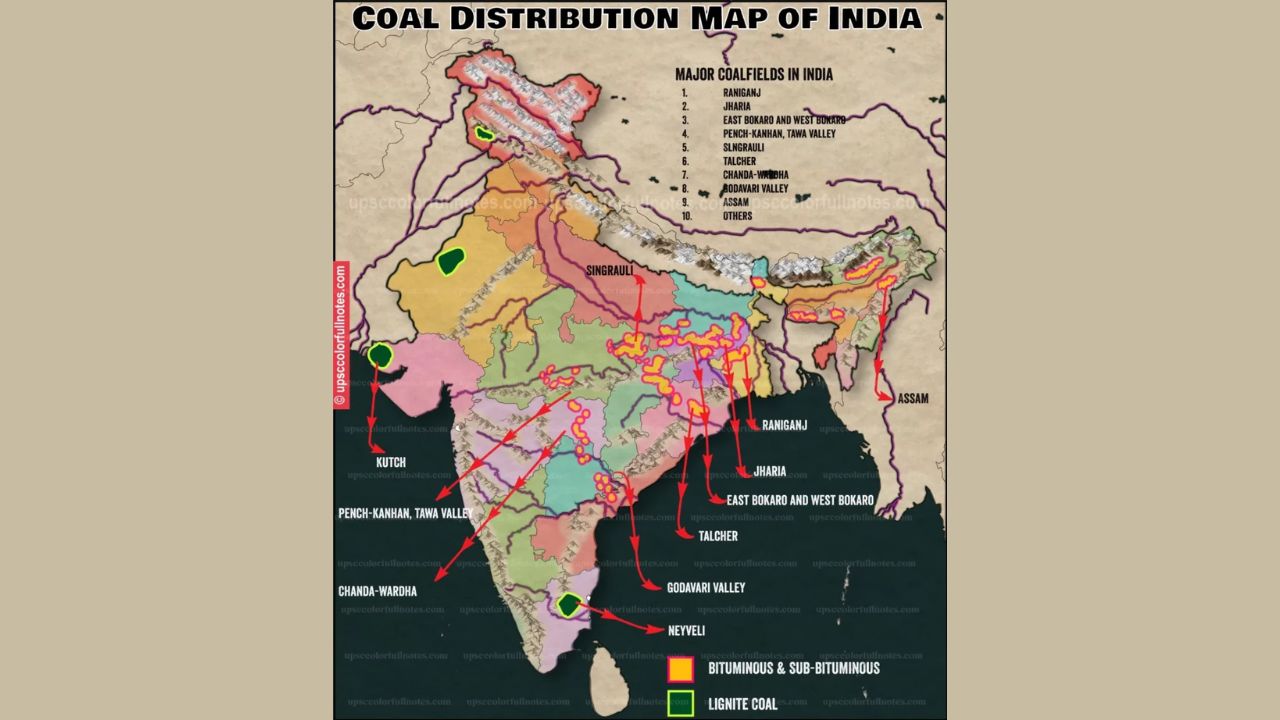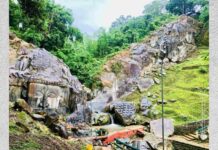Exploring India’s Major Coal Fields and Important Coal Mines: The first coal mine in India, Raniganj, was established by the East India Company in 1774, which dates India’s coal mining history to the 18th century. India possesses a sizable reserve of diverse mineral resources, most notably coal, thanks to its abundance of primordial hard rocks. This article attempts to provide insightful information on India’s major coalfields.
Exploring India’s Major Coal Fields and Important Coal Mines: Categorization of India’s Coal Mines
Coal distribution in India is divided into two primary categories:
Gondwana Coalfields – These coalfields are approximately 250 million years old and account for 98 percent of India’s total coal reserves and 99 percent of the country’s coal production. Gondwana coal is distinguished by its low moisture content and phosphorus and sulphur content. Gondwana coal has a lower carbon content than the much older Carboniferous coal, which is approximately 350 million years old and almost nonexistent in India due to its much youthful age.
Tertiary Coalfields – The age of these coalfields ranges between 15 and 60 million years. Despite having a low carbon content, tertiary coal is typically abundant in moisture and sulphur. Tertiary coalfields are primarily located in extra-peninsular regions, such as Assam, Meghalaya, Nagaland, Arunachal Pradesh, Jammu and Kashmir, the Darjeeling Himalayan foothills in West Bengal, Rajasthan, Uttar Pradesh, and Kerala.
In Poland, where coal is king, homeowners queue for days to buy fuel
Significant Coal Mines in India: A Table of Coal Mines, States, and Characteristics
| Coal Mine | State | Features/Prominence |
|---|---|---|
| Jharia, Dhanbad, Bokaro, Jayanti, Godda, Giridih (Karbhari Coal Field), Ramgarh, Karanpura, Daltonganj | Jharkhand | Jharkhand is known for its rich coal deposits, and Dhanbad, one of its oldest coalfields, holds some of India’s best metallurgical coal, especially coking coal used in steel production. The Gondwana Coalfield in the state is significant for coal exploration and production. Giridih’s Karbhari Coal Field is notable for providing the finest coking coal in India for metallurgical purposes. |
| Raniganj Coalfield, Dalingkot (Darjeeling), Birbhum, Chinakuri | West Bengal | West Bengal hosts several coalfields, with Raniganj Coalfield being one of the oldest in India. Darjeeling and Jalpaiguri are chief producing districts in the state. The Gondwana Coalfields in West Bengal are important for coal extraction. |
| Korba, Bishrampur, Sonhat, Jhilmil, Hasdo-Arand | Chhattisgarh | Chhattisgarh is rich in coal reserves, and the Gondwana Coalfields in the state contribute significantly to India’s coal production. |
| Jharsuguda, Himgiri, Rampur, Talcher | Odisha | Odisha’s Talcher Coalfield ranks second in reserves after Raniganj, making it a crucial source of coal in the country. The coal in this region is suitable for steam and gas production, extensively used in thermal power plants at Talcher. The state also has Gondwana Coalfields. |
| Singareni, Kothagudem, Kantapalli | Telangana/ Andhra Pradesh | The Godavari Valley houses most of the coal reserves in this region. The coal variety explored here is non-coking, and the workable collieries are located at Kothagudem and Singareni. The state also has Gondwana Coalfields. |
| Neyveli | Tamil Nadu | Neyveli is situated in a Tertiary coalfield in Tamil Nadu, indicating its relatively more recent geological formation compared to the Gondwana Coalfields in other regions. |
| Kamptee (Nagpur), Wun field, Wardha, Walarpur, Ghughus, and Warora | Maharashtra | Maharashtra’s coalfields belong to the Gondwana period, representing a significant geological era. |
| Ledo, Makum, Najira, Janji, Jaipur | Assam | Assam’s coals are known for their low ash content and high coking qualities, making them ideal for metallurgical purposes. Additionally, the coal from this region is suitable for liquid fuels and hydrogenation processes. The coalfields here belong to the Tertiary period. |
| Darrangiri (Garo hills), Cherrapunji, Liotryngew, Maolong, and Langrin coalfields (Khasi & Jaintia Hills) | Meghalaya | The coalfields in Meghalaya belong to the Tertiary period and are geologically distinct from the Gondwana Coalfields in other parts of India. |
| Singrauli, Sohagpur, Johila, Umaria, Satpura coalfield | Madhya Pradesh | Singrauli, one of the largest coalfields in Madhya Pradesh, is significant for coal extraction and production. The state also has Gondwana Coalfields. |




